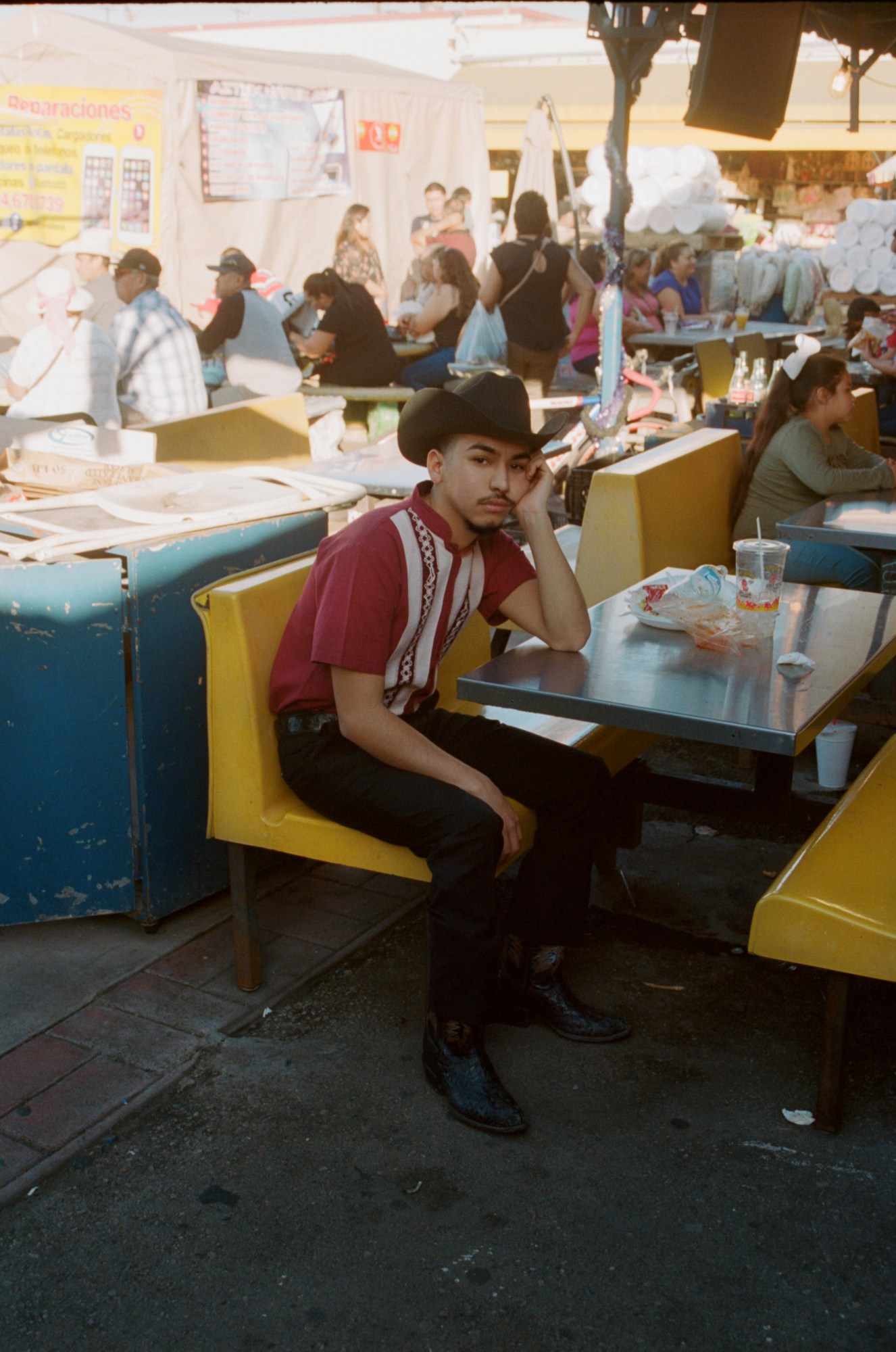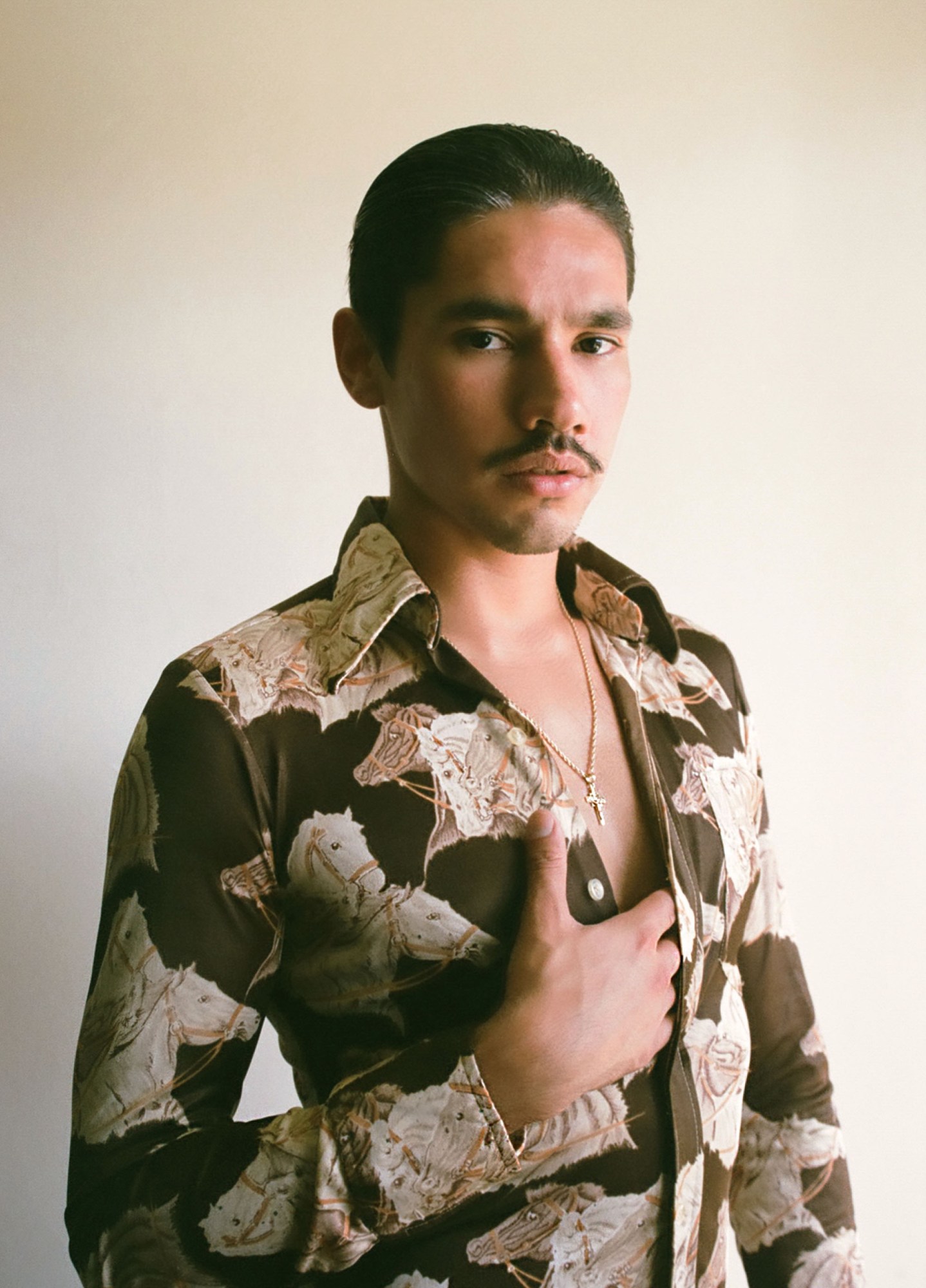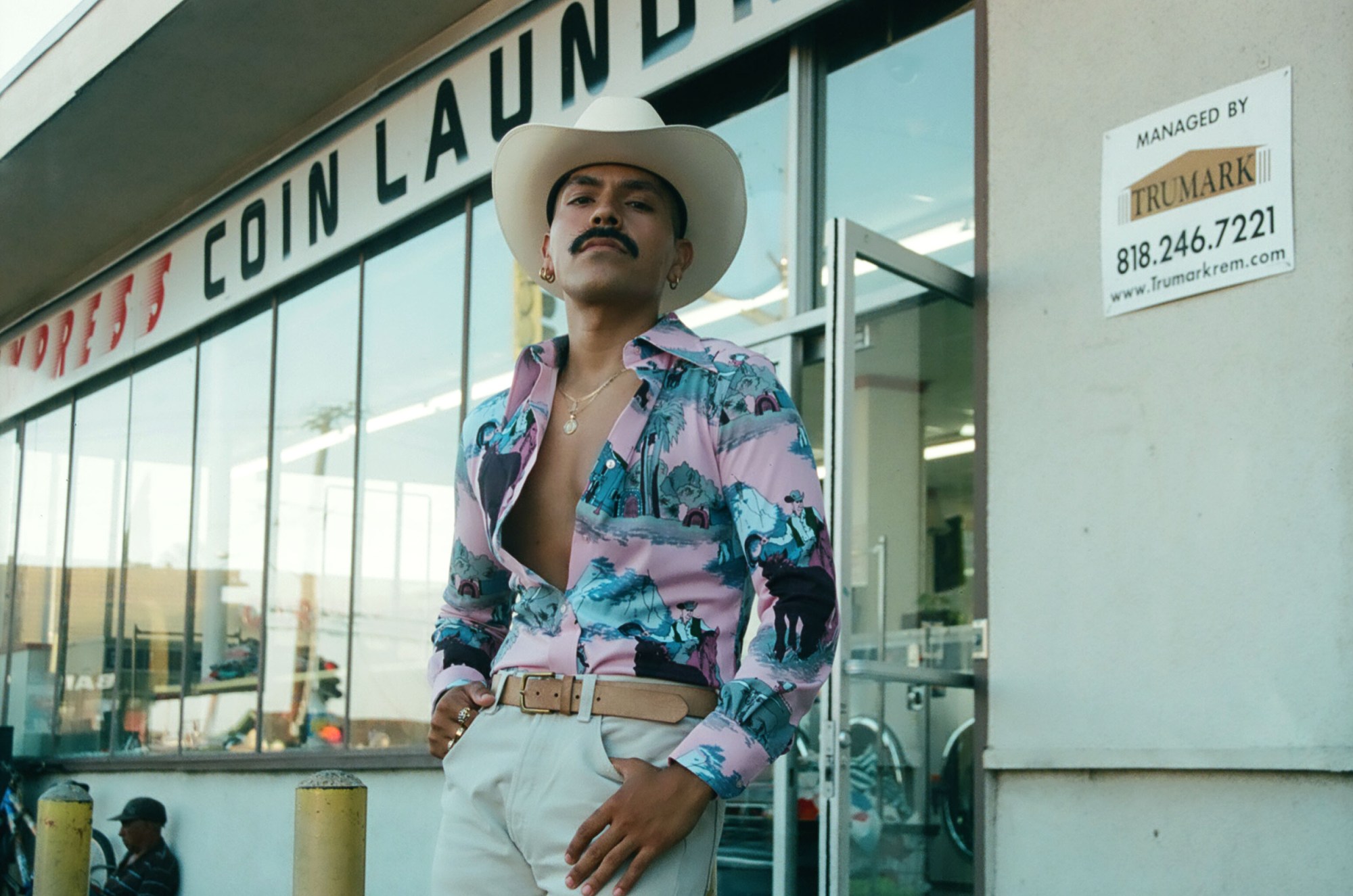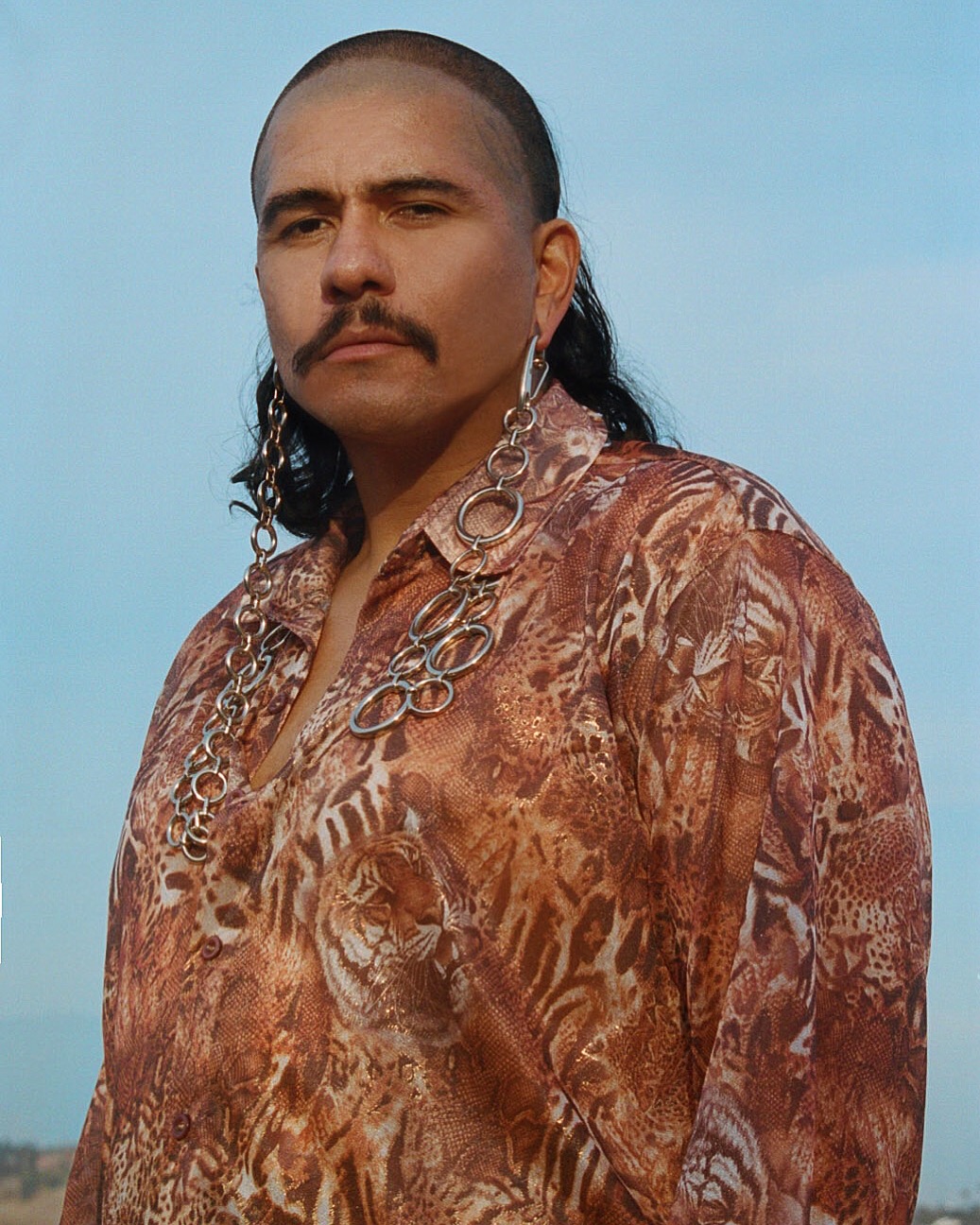In Mexican culture, like many others, masculinity is expressed and defined by particular behaviours, mannerisms and roles in society. These characteristics are considered to set straight men apart from those of women and homosexuals. Nowhere is this more apparent than in the presentation of the Mexican ‘ranchero’.
Traditionally a symbol of hyper-masculinity, the ranchero is the rancher, the cowboy, the Mexican Marlboro man. Known for his pointed boots and cowboy hats, the ranchero has served as a way for Mexican men to assert their manhood through character and style. Now, in the latest work by LA-based photographer, Fabian Guerrero he’s become a conduit through which to explore more subversive topics of gender and masculinity — forming the basis of his latest photography series, ‘Brown Queer Rancheros’.
A first-generation Mexican-American and member of the LGBTQ community, Fabian photographs queer men from Los Angeles in traditional ranchero dress. Reconciling the gender and cultural clashes he experienced growing up, he portrays his subjects in strong, confident, macho poses that contradict gay stereotypes. And, through his depictions, he challenges the notion that masculinity and homosexuality are mutually exclusive, photographing queer, brown bodies who, despite the misconceptions, can rock boots and cowboy hats just as fiercely as six inch heels.

You grew up in Texas and Tamaulipas, what drew you to Los Angeles?
I think it goes back to being back and forth between here and Mexico, I kind of developed this traveler inside me that wanted to go out and find more. I was a very curious person. I wanted to learn more of myself and more from the raza [people of Mexican descent] here, especially in LA. The first couple of years, I was very low-key, but also very observant and very engaging with the gente [common folk] and the community because I was still figuring it out.

When was the idea to photograph rancheros born?
It actually started when I was going through family photos and began to notice the fashion for the first time. I grew up with my mum but didn’t pay attention to those details. It wasn’t until I was looking at videos and photos that I really began to see the clothing and what they would wear, from the botas [boots] to the shiny shirts.

Rancheros are traditionally known as very old-school, heterosexual Mexican men. What led you to photograph self-identified queer subjects in this style?
Part of growing up in this environment is that you get told that if you’re gay then you’re viewed one way. People think that just because you’re gay you have to look like a girl, act like a girl, talk like a girl. And I’m like, no, I can still dress like this and be gay, and why not? This is my way of saying, I’m gonna make this queer, I’m gonna make this me because I, myself, am a brown, queer body. I’m using this tool and glamorising myself like, bitch, I’ve got a high heel on!

What is your process when it comes to styling and choosing who to photograph?
It all started with someone called Jose, who’s really a good friend of mine now. I found him on Instagram, and saw photos of him in his tejana [cowboy hat] and botas, and was like wow, yes! I reached out to him and photographed him and that one photo, I guess, went off. I got hit up by people telling me, “you don’t know what this means to me, thanks for putting this out there.” When it comes to styling, everyone has brought in their own clothing. I want to keep the person’s essence and who they are. I don’t want to take away from who they are because that’s where I see the intimacy — when I let them be themselves.

How has the representation of queer males as rancheros, been received by your followers?
Friends tell me, “You’re making me wanna wear my botas again!”. I’m like, yes! Do your thing, be proud of it, don’t be afraid. Cause half of the time it’s past trauma. We learn to escape from that reality, to erase a part of your life to adapt and assimilate. I want to make sure that the community, the raza, us brown people, are getting seen in a way that is real.
